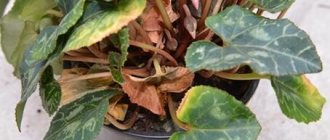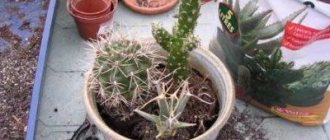When is it needed?
Rescue is required only in situations where the plant has not yet died completely, since otherwise all measures will be useless.
The florist must carefully examine the azalea: the presence of living buds and sprouts is the basis for prompt resuscitation. Also, rescue will be successful if the plant stem remains green. If the stem is damaged, it remains possible for the flower to revive from the rhizome.
This procedure is necessary if the leaves have massively turned yellow, withered or fallen off. First aid is required if the plant is unhealthy or if its parts are mechanically damaged. Also, resuscitation is needed if signs of rotting are clearly visible.
Treatment should also be provided in case of severe pest infestation. The need for resuscitation is determined by the appearance and severity of dangerous symptoms on the flower.
Read about why azalea leaves change color and shape, and what can be done about it, and from this article you will learn about the causes of blackening of foliage and the solution to this problem.
When is resuscitation futile?
When the situation is seriously neglected, it is impossible to save the Azalea; lovers replace the loss with a new flower. But only an experienced and caring gardener can notice the symptoms of trouble in time and correct the situation. They give up if:
- all branches break easily, brown inside;
- the root collar has rotted;
- when transplanting, it becomes obvious that the roots have rotted;
- the stems and roots have become mushy, porous, more like mucus.
In these cases, no resuscitation will help.
You can try to find at least one surviving layer and keep it in Kornevin or any other stimulant to grow a new plant. The dead aerial part, with relatively intact roots, is removed; in this case, new shoots from the root are expected to appear. This procedure is labor-intensive, since it is difficult to create suitable conditions for this plant, but nothing is impossible for amateurs.
5 / 5 ( 1 voice )
Why does the flower die?
Azalea usually loses vigor, withers and slowly dies due to improper care. Most often this is caused by traditional unfavorable factors:
- irregular watering;
- excess moisture;
- high or low air temperature;
- leaves are burned from direct rays of the sun;
- azalea does not receive light and nutrients (no feeding);
- planting in unsuitable soil.
An azalea can also die if it is heavily infested with pests: moths, bedbugs, ticks. In stressful situations (sharp temperature changes), the plant begins to dry out. Azalea is not afraid of low temperatures (up to +10°C) only if it is first hardened. For successful rehabilitation, it is important to accurately determine the cause and correlate it with the symptoms.
- Dry leaf edges and brown spots are a sign of waterlogging of the soil or dry air.
- Dry spots on the foliage are a sign of insufficient watering, soft spots - frequent.
- The fall of green leaves occurs in a stressful situation, during drafts, and watering with cold water.
- Loss of color is due to lack of lighting or excess nitrogen.
- The green parts of the azalea have become pale - the plant lacks nutrients.
Read more about azalea diseases and pests here.
What to do when leaves fall
It is advisable to know at least something about rhododendrons before adding them to your home. Because of the difficulty of care, azalea is called a capricious beauty. But if she settles in comfortable conditions, she will delight her owners with a healthy appearance and lush flowering. You just need to arrange her care so that there is a balance in everything.
Azalea feels great at air temperatures no higher than +22 °C in summer and +15 °C in winter. It should be light enough, but without direct sunlight. The pot and air should be humid (80%), but it should not be sprayed during flowering. The soil needs to be acidic. Trouble begins when these conditions are violated.
If the leaves begin to dry out, change color, or become stained, you need to find out why this is happening and eliminate the cause. Leaves can fall very quickly. They turn yellow as a result of pest attack - then you need to take prompt action. And if a lot of calcium has accumulated in the soil, adding a little citric acid to the water will help.
The main cause of leaf falling is excessive dryness and high air temperature. As soon as the greenery begins to dry out, you need to lower the air temperature (this will make it easier for the plant to recover), water it with settled, acidified water, and spray the flower.
If your azalea is drying out, give it a cool shower. Most likely, tap water contains a lot of salts and unnecessary impurities (which is why it is settled), so you will have to use a watering can with a fine sieve to bathe it with clean, settled water with the addition of citric acid. You can immerse the pot in a basin so that the water is 2 cm above the rim, leave it for 20–30 minutes, then let the excess water drain. Just fill the flower with acidified water!
How to resuscitate at home - step-by-step instructions
To save an azalea from any negative factor, preliminary preparation is required.
During the resuscitation process, you may need new calcined soil, a new pot, ash or sand, chemical and biological preparations.
How to restore a flooded one?
Symptoms of the condition are limp and dull leaves, the appearance of yellow spots on them. Water does not seep into the earthen lump.
When flooded at the bottom of the pot, the soil begins to turn sour and rot develops. Sap flow stops inside the plant. With regular overwatering, the azalea will completely die in 3-4 months.
How to fix the problem? A rescue measure is transshipment of azaleas. It includes the following actions:
Carefully remove the unhealthy flower from the pot.- Remove the wet soil from the roots and rinse in warm water. Next, inspect the root, cut off the rot, and treat the living parts with special preparations. For treatment use Discor (5 ml per 10 liters of water), Trichodermin (5 g per 1 liter of water), Maxim (1 ampoule per 1 liter of water).
- Replant the azalea in a new pot and new soil. Do not water in the first 4-5 days. Next, regulate watering as the top soil layer dries.
Rescue measures
| Cause | Rescue measures |
| The azalea has dried up. |
|
| Pest infestation. |
|
| Unsuitable soil. |
|
How to revive if the plant is frozen?
- The flower pot should be put in a warm place. Then you need to carefully monitor the temperature; differences should not be more than 5 degrees.
- Immediately after placing it in a warm place, the pot should be lowered into a bowl of warm water.
The top of the plant should be covered with film to create a greenhouse effect.For the best effect, spraying with Epna solution is recommended (choose the dosage depending on the condition of the flower).
- You can also treat azalea with Kornevin (1 g per 1 liter of water). Water with Kornevin for 5-7 days.
Description of the bush and its features
The second name for azalea is rhododendron. This is a shrub with delicate inflorescences. He is able to decorate the house at any time of the year. The main advantage of azaleas is long-term flowering. There are a lot of branches with leaves on the bush. The leaves are not large, oval and covered with small fibers on both sides.
There are azalea hybrids with bell-like flowers. This species has a variety of colors, and the inflorescences are double or semi-double. Depending on the periods and duration of flowering, azalea shrubs are divided into:
• early flowering; • medium flowering; • late flowering.
Prevention
The main components of prevention are proper watering, moderate fertilizing, adherence to temperature and light conditions..
- For watering, take water at room temperature, do not overwater the plant.
- Once a month, water the azalea with water with the addition of boric acid (1-2 drops per 1 liter).
- Remove excess stems and fallen parts in a timely manner.
- Feed at any time except winter.
- As it grows, change the pot and soil.
How to revive a dried azalea - effective methods of resuscitation
- non-compliance with temperature conditions;
- insufficient or excessive watering;
- lack of soil due to the growth of the root mass;
- unfavorable soil composition;
- damage to the root system;
- lack of fertilizers;
- pest infestation.
A few simple techniques can revive a potted flower, but the revival process takes a long time.
First, you need to cut off all dry branches with dead buds. Specimens with living shoots are subject to restoration. Remove the azalea from the pot. Place the bush in a spacious bowl of cool water. Carefully clean the roots until the substrate is completely removed without damaging them. Wash the roots and remove rot. Keep the bush for half an hour in water with the addition of a biological product. Cut off all dry and wilted leaves. Replant into new soil. Water regularly 2 times a week with settled life-giving moisture.
Transfer rules
Increase the width of the container with each annual transshipment. The soil composition includes acidic deciduous soils, peat, pine needles, sand, add ash or activated carbon, shoot growth stimulants.
Mandatory drainage. Place expanded clay on the bottom. Moderate watering for the first 12 hours after transplantation. On the second day, cover the dishes with ice and pour over them.
Azalea bushes should be placed in shaded areas of the room. Dissolve 5 drops of medicinal boric acid or lemon juice in a liter of settled (preferably melted) water. Water the rhododendron with the resulting solution for several days until it resurrects. Once a week, feed with a growth stimulator. For a glass of liquid, 2-3 drops are enough.
The transplanted azalea should be exposed to a draft. In the summer heat, you can put it in the refrigerator for the whole day. It is useful to place pine or spruce needles on the surface of the soil. Cold watering is carried out once every two days.
Important! It is prohibited to place pots on window sills above heating radiators. This is the main reason for the drying and falling of buds and leaves.
Important! Water stagnation and direct exposure to sunlight lead to the death of the bush. At home, the plant suffers from attacks from spider mites, moths
When they first appear, the bush should be treated with a weak solution of potassium permanganate and soap.
At home, the plant suffers from attacks from spider mites and moths. When they first appear, the bush should be treated with a weak solution of potassium permanganate and soap.
Special chemicals are used for severe lesions. Proper care will save the azalea from drying out, and there will be no need to carry out revitalization procedures.
The positive energy mood of her owner will be of great help in resuscitating a capricious beauty.
For intensive and long flowering, a small bush requires special care and maintenance conditions:
- constant temperature within 10-22°C;
- balanced air humidity;
- watering with soft (melt, rain, river) acidified water 15-16°C;
- sufficient lighting;
- application of fertilizers.
Daily spraying and artificial rain in the garden and on the balcony are an excellent way to care. During flowering, spraying is prohibited to prevent the delicate buds from falling off.
Difficulties during
Since this is a delicate and demanding plant, some difficulties may arise during the care process. The owner of an azalea must be attentive to the pet in order to quickly react and save the seedling. The most common problem is the dropping of leaves and drying out of the bush. There may be several reasons for this. And in order not to completely destroy the plant, you need to make a competent diagnosis - to understand what the reason is. There may be several of them, so let's look at them all.
Makeup for women over 50 to look younger than your age
What is drying out of a houseplant?
Drying is a phenomenon when more water evaporates from plant leaves than enters them from the soil and air. Azalea is a very demanding flower to the environment. She can't stand the heat and will be much more comfortable in a cool place. The optimal temperature is from 12 to 18 degrees. The flower is also intolerant to direct sunlight. At the same time, she will not be able to survive in a dark place.
It is important! You cannot expose an azalea to a stressful situation during transportation and buy it in winter: it will freeze and not one or two layers of craft paper will save the plant.
Appearance
During drought, the appearance of an azalea may change even before the active phase begins.
Signs of drought:
- the appearance of dry grayish spots;
- pest invasion (read about pests and diseases of azaleas here);
- the appearance of brown or brown spots;
- the tips of the leaves dry out and turn brown;
- leaf fall.
What is the danger to rhododendron?
Azalea is a very delicate flower and may simply not tolerate drying out. It should not be left to grow in a small pot for a long time. After flowering has ended, it must be replanted using the transshipment method.
Lack of attention to environmental conditions, pot size and soil composition can be dangerous for the plant. Drafts and frequent temperature changes will result in leaves turning brown and drying out for the plant. Another reason for the formation of brown tips on the leaves is the use of too hard water for watering. Or the plant is too dry.
How to reanimate after illness
Azalea diseases are the result of care errors. These can be caused by changes in air temperature and humidity levels. If the leaves of an azalea turn black, the cause may be the Black Triassic or infection with fungal diseases. Septoria (red-yellow spots with black dots), cercospora (brown spots with red edges on the underside of the leaf), phyllostictosis (brown or gray spots) are characterized by the presence of spots that appear and grow on the leaves and stems of the plant. Late blight affects the roots, and is indicated by curling and drying of the leaves, which first darken, starting from the very tips, change color, and then curl and fall off.
These diseases will be prevented from progressing by special drugs that need to be started as early as possible: Bordeaux mixture, Fundazol, Ditan, Topsin-M or other fungicides. With verticillium, the base of the stem darkens, not the leaf; this can more likely lead to death. Timely treatment with copper sulfate or fungicides will help. The sooner the disease is identified, the sooner treatment will begin, which means there will be more hope for the complete recovery of the plant.
After using special preparations, it is necessary to destroy all affected parts of the plant so as not to give the disease a chance to return. An azalea that has suffered from disease needs restoration procedures no less than after a pest invasion or drying out due to poor care. The main goals are the same: restore immunity, improve conditions, help absorb nutrients.
The azalea must be replanted into new soil, making sure to check the condition of the roots. Then apply frequent watering and spraying with water with boric and citric acid alternately, sometimes using Elina solution to strengthen the immune system.
It is important that at this time the air temperature does not rise above +20–22 degrees, and the lighting is soft without direct sunlight.
Causes of leaves falling and solutions
What to do if the azalea has lost all its leaves and dried out? Answering this question, first of all it is worth noting that this problem is the most common. The main reason for this phenomenon is the lack of necessary conditions for the normal development of the plant. Azalea requires balance in everything and does not tolerate dry air and high humidity, too low and too high temperatures very well.
When an azalea is sick, its leaves fall off. What to do in such a situation? Everything is quite simple. It is necessary to carefully control the air humidity in the room. It is recommended to do this using a tray in which you can place a certain amount of wet expanded clay and peat. In addition, you need to spray the surface of the leaves several times a day, but this is strictly prohibited during the flowering period. It is also possible to lower the pot with the plant itself into a container of water at room temperature. This allows the dry soil to absorb the necessary amount of water for the normal development of the shrub.
How to save an azalea in this situation? To reduce the risk of such a problem, you should use only water that has previously stood for at least three days at room temperature. The use of boiled water is also allowed.
Another cause of yellowing and further falling of leaves and buds can be spider mites. A thin cobweb, which is located in the internodes of the stems, will tell you about its presence. To eliminate the problem, the plant must be sprayed frequently and generously, and during flowering, use a soap solution or special chemicals.
When can you revive an azalea?
How to propagate azalea at home
Before you learn how to revive an azalea at home, you need to find out whether saving the culture is possible at all. Resuscitation will be successful if not all of the leaf mass has fallen, but most of the root system is healthy.
In what situations can a flower not be saved?
In some cases, the culture cannot be restored. For example, if the root system is 50% rotten, all the foliage has fallen off and the flower has been in this state for a long time.
Why does this happen to a potted plant?
There are many factors why azaleas wither and dry out. Here are the main ones:
- watering is carried out incorrectly;
- little lighting;
- insufficient nutrients;
- transplantation during flowering;
- fertilizer shortage;
- the root system is affected by the disease;
- chlorosis (presence of a large amount of calcium in the soil);
- stressful periods for a flower;
- presence of pests.
Pests and diseases
Azalea is very sensitive to spider mites, aphids and scale insects. These insects cause damage to the plant's foliage, which turns yellow and falls off.
Resuscitation of an azalea when damaged by pests consists of:
- in removing damaged leaves;
- treating plants with special solutions against pests for indoor plants;
- if necessary, replace the soil.
With planting soil, a fusarium fungus can be introduced into a flower pot, which negatively affects the development of azalea roots, from which they can completely die. Saving the flower in this case consists of watering it with a solution of potassium permanganate and the antifungal drug “Fundazol”.
Why do the leaves fall off and the buds dry out?
Azalea dries out in the absence of optimal conditions for its maintenance. There can be several reasons for drought:
- insufficient room lighting;
- direct sunlight on the plant;
- incorrectly selected mode of watering the flower;
- small size of the pot in which the azalea grows;
- lack of land due to the growth of roots;
- diseases of the root system;
- pest damage;
- lack of timely fertilizing or insufficient soil nutrition;
- incorrectly selected substrate;
- incorrect choice of temperature.
Azalea sheds its leaves - why this happens and how to help the plant, read here.











